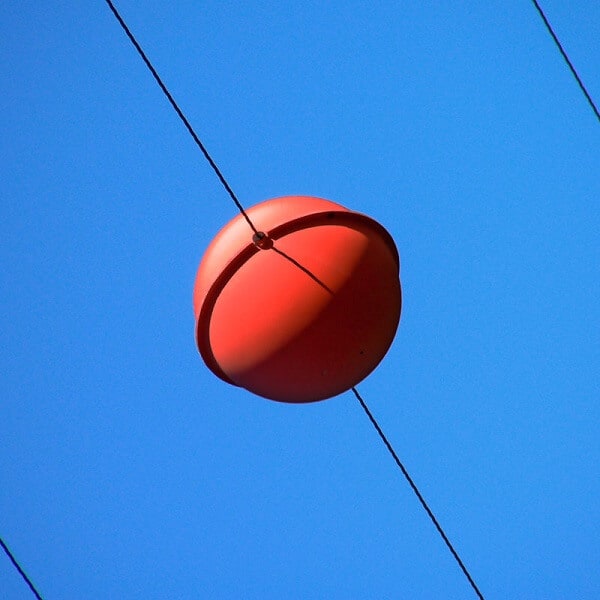What Are the Colored Aerial Marker Balls on Power Lines For?
What Are Marker Balls and Why Are They Used on Power Lines?
Almost all of us have seen colored balls (usually orange, yellow, red, or white) on transmission and distribution power lines. Ever wondered what they are and why they’re used? Let’s discuss in detail – no need to overthink it, as there’s no rocket science involved.
What are Those Balls?
These are called “Marker Balls,” also known as “Aerial Visibility Marker Balls.” They typically weigh around 7.7 kg (17 pounds) each. The most commonly used color is “International Danger Orange” (British Standard 381C-1964-No. 557 or U.S. Engineer’s Spec. 595-121197). However, depending on the surroundings and visibility needs, yellow, red, or white balls may also be used, as recommended by the Federal Aviation Administration (FAA).
The diameter of marker balls used on power lines and less extensive catenary wires (those crossing rivers, lakes, canyons, etc.) below 15 meters (50 feet) should be at least 51 cm (20 inches). For more extensive catenary wires and power lines, the diameter should be no less than 91 cm (36 inches).
What are They Used For?
Aerial marker balls are used for safety. They help save lives and protect infrastructure by making guy wires and power lines (transmission, distribution, and communication lines) visible to low-flying helicopters, aircraft, and planes, as required by the Federal Aviation Administration (FAA).
Some marker balls glow due to the electric field surrounding the power lines. In some cases, flashing marker balls are installed on transmission poles, towers, and power lines for increased visibility.
Power lines and sky wires can become nearly invisible against the terrain, as the human eye loses visual acuity when looking slightly off-center. Other factors like lighting conditions and dirty windscreens further hinder pilots’ ability to notice the lines.
This is precisely why marker balls are installed, particularly on overhead cables and wires crossing major highways, freeways, valleys, deep gullies, and areas near airports where aircraft tend to fly lower during landing.
- Related Post: What Does Hanging Shoes from Overhead Power Lines Mean?
Next time you see those colored balls on power lines, remember that they’re there for safety, protecting lives, aircraft, and the valuable electrical power system infrastructure.
Related Posts:
- Will a Man Get an Electric Shock If He Hangs on a Live Wire?
- Will I Get an Electric Shock If I Touch the Ground Wire?
- Can the Neutral Wire Cause Electric Shock? Different Cases
- Why is Live Line-Washing or Cleaning Done on Energized Power Lines?
- Why is the Ground Wire Always Positioned Above the Overhead Power Lines?
- What is the Minimum Ground Clearance for Overhead Power Line?
- Why are Overhead Power Lines Loose on Electric Poles & Towers?
- How Many Poles and Towers are Situated Within a 1-km Span?
- Basic Electrical & Electronics Interview Questions & Answers
- 65+ Basic Electronics Engineering Interview Questions & Answers










marker balls installed on the power lines
sorry guys but the colored balls installed on power lines has another very important function beside signaling.. They are called eletro- geometric dissipator globes (esferas dissipadoras eletro-geométricas ) and are istalled to atract lightnings and conduce the eletricity toward the tower where it is grounded, thus avoiding the lines to sever and fall down over people or veicles.
thats interesting thanks for sharing that it makes sense though. wouldnt want a fallen line falling on top of people or houses. always wondered what they did about lightning and power lines.
Good article and right to the point. I was always thought about those balls hanging on power lines but never think about it.